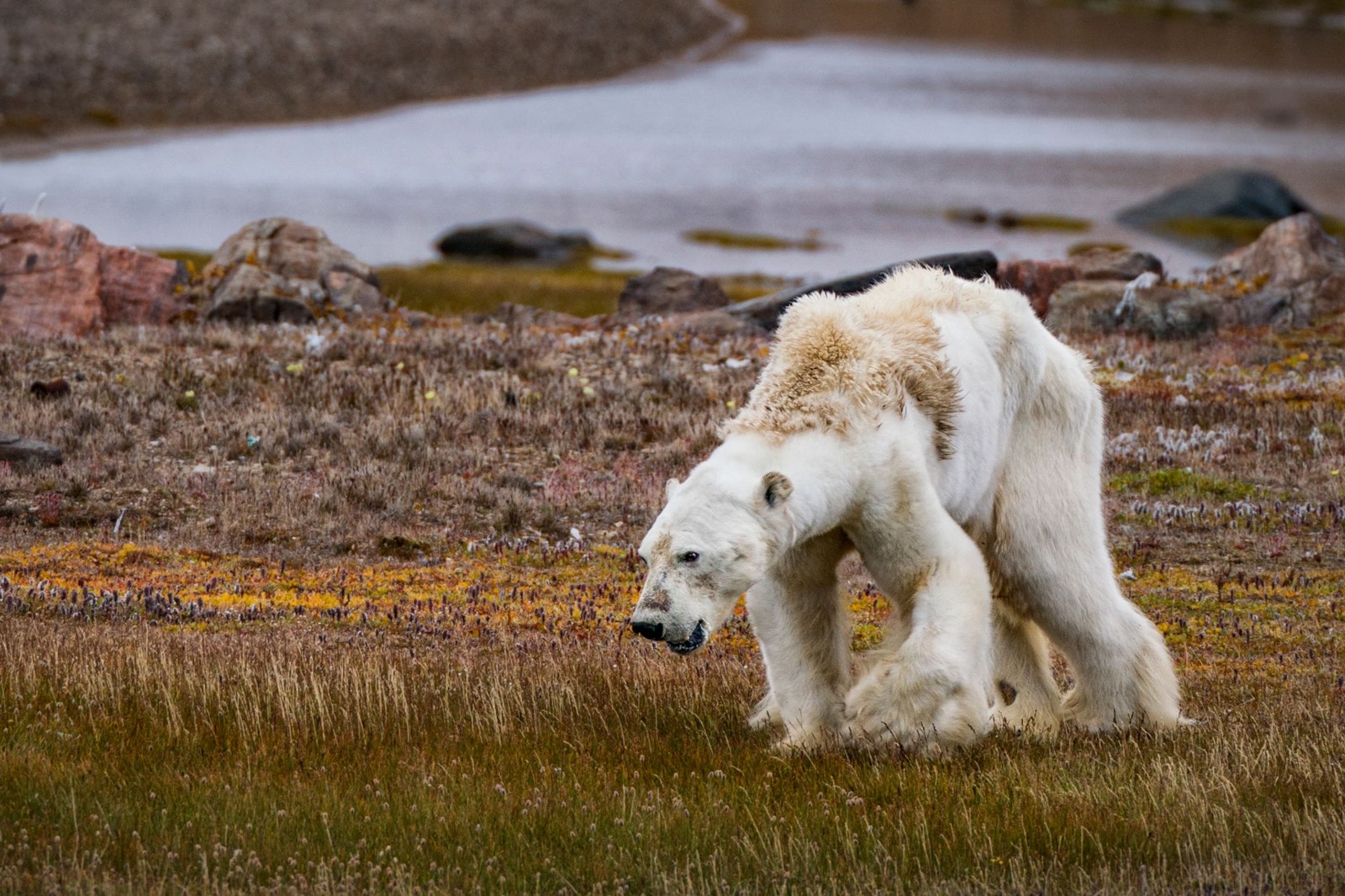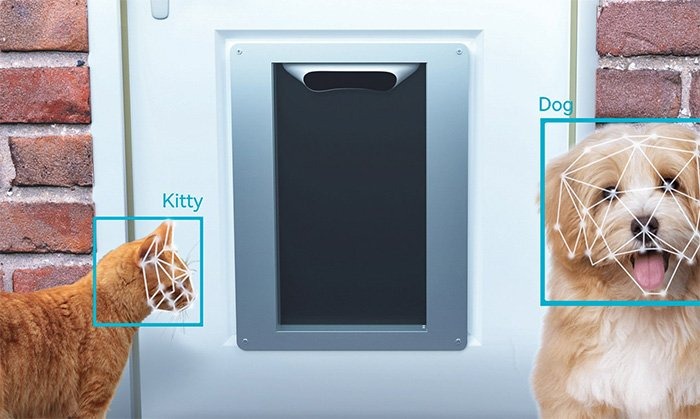
Citizen science projects involving pets or animals: how pet owners can contribute
Citizen science projects involving pets empower owners to contribute to wildlife observation, animal behavior studies, disease monitoring, environmental research, and genetic investigations. By integrating scientific participation into daily routines like walking, observing, or tracking pets, individuals help advance ecological understanding, public health, and conservation efforts, while fostering stronger human-animal bonds and promoting responsible stewardship of the environment.
🐶 Pet Star
57 min read · 10, Oct 2025

Citizen Science Projects Involving Pets or Animals: How Pet Owners Can Contribute
In the last few decades, the concept of citizen science has expanded dramatically, turning ordinary people into valuable contributors to scientific research. Citizen science is the practice of non-professional individuals assisting with scientific investigations, data collection, and analysis. Traditionally, these projects have focused on fields like astronomy, ecology, or climate science. However, an emerging trend has been the involvement of pets and domestic animals in such research, enabling pet owners to contribute directly to scientific understanding while engaging more meaningfully with their companions. This article explores the ways in which pet owners can participate in citizen science projects involving animals, the benefits of such engagement, and the broader implications for animal welfare, biodiversity, and environmental awareness.
The Rise of Citizen Science and Its Intersection with Pets
Citizen science has grown thanks to the proliferation of technology, social media, and mobile applications. Previously, participating in research required formal training or affiliation with scientific institutions. Today, a smartphone, curiosity, and a love for animals are often enough to participate meaningfully. Pets, particularly dogs and cats, serve as companions that connect people to nature and to scientific inquiry. Pet-centered citizen science leverages these bonds, transforming ordinary activities like walks, feeding, or grooming into opportunities for data collection.
The integration of pets into citizen science projects spans several domains: wildlife observation, behavioral studies, disease monitoring, environmental research, and even urban planning. For example, dogs can be trained to sniff out invasive species or detect diseases, while cats and other pets can help map urban biodiversity by tracking their interactions with wildlife. Pet owners become frontline researchers, their daily routines generating real-time, actionable scientific data.
Categories of Citizen Science Projects Involving Pets
1. Wildlife Observation and Biodiversity Monitoring
Many citizen science projects rely on humans and pets to monitor wildlife presence and biodiversity. Dog owners walking their pets can observe and report the types of birds, insects, mammals, or reptiles in their area. Apps like iNaturalist allow users to upload photos of animals or plants, which are then verified by experts. Pets often act as catalysts in these projects, helping owners explore different environments—parks, forests, or urban streets—where wildlife data can be collected.
For example, a project might track the migration patterns of local bird species by noting which species are observed during morning walks. Similarly, pet owners can contribute to urban biodiversity studies by recording encounters with local wildlife, documenting the presence of invasive species, or tracking seasonal changes in flora and fauna. The cumulative data from thousands of pet owners can be invaluable for conservation efforts.
2. Tracking Animal Behavior
Behavioral studies are another area where pet owners play a crucial role. Scientists often rely on pet owners to record daily behaviors of domestic animals—dogs, cats, rabbits, or birds. For instance, researchers may investigate sleep patterns, feeding habits, or social interactions to better understand animal cognition, emotional wellbeing, or even health indicators.
Projects like the Cat Tracker app enable cat owners to map their pets’ movements and interactions outside, revealing insights into domestic cat behavior and their ecological impact. Similarly, dog behavior studies often involve owners submitting data on activity levels, responses to stimuli, or interactions with other dogs. These contributions help researchers build a large-scale understanding of animal behavior in naturalistic settings, something that is nearly impossible to achieve in controlled laboratory environments alone.
3. Disease Monitoring and Health Research
One of the most impactful ways pet owners can contribute to science is through monitoring animal health and disease spread. Pets, like humans, can be susceptible to infectious diseases, parasites, or environmental toxins. Citizen science projects can help track outbreaks and improve preventive measures.
For example, TickSpotters is a program where dog and cat owners submit pictures of ticks found on their pets. Scientists then identify the species and track the prevalence of tick-borne diseases, helping public health officials predict and manage risks. Similarly, platforms like Pet Disaster Watch or community-based reporting systems collect data on local cases of zoonotic diseases—diseases that can transfer between animals and humans—contributing to epidemiological research. By monitoring their pets, owners provide a frontline early warning system that can have public health implications.
4. Environmental Impact Studies
Pets, particularly dogs, can influence their environments in measurable ways, making them interesting subjects for environmental research. For instance, dog walking patterns affect soil compaction in parks, trails, and natural reserves, while cats influence local bird and small mammal populations. Citizen science projects often recruit pet owners to track these effects.
Studies have leveraged apps like DogLog to collect GPS-based data from dog walks. Such datasets help ecologists understand human-pet-environment interactions, urban green space utilization, and even animal impact on local ecosystems. By participating, pet owners contribute to sustainable urban planning and wildlife conservation.
5. Genetic and Genomic Research
Advances in genetics have created opportunities for pet-centered citizen science in an unprecedented way. Companies and research institutions often run projects that involve collecting genetic material, such as cheek swabs from dogs or cats. The collected samples help scientists study breed-specific traits, genetic diseases, or population genetics.
For instance, the Dog Aging Project encourages dog owners to participate by submitting health records, activity data, and biological samples. The goal is to understand aging processes, breed-related health risks, and longevity factors. By contributing to these studies, pet owners directly advance veterinary science and potentially improve the health and longevity of future generations of pets.
Practical Ways for Pet Owners to Participate
Participation in citizen science projects can vary in complexity, from casual observation to structured data collection. Here are practical ways pet owners can get involved:
- Download Citizen Science Apps: Platforms like iNaturalist, Cat Tracker, DogLog, and TickSpotters make data submission simple and interactive.
- Record Observations: Maintain a diary of your pet’s outdoor activity, encounters with wildlife, or unusual behaviors.
- Take Photos or Videos: Visual evidence helps researchers verify species, behaviors, or environmental conditions.
- Submit Biological Samples: Participate in genetics or health studies with proper guidance from researchers or institutions.
- Engage in Community Programs: Many local conservation societies or veterinary clinics run citizen science initiatives involving pets.
- Spread Awareness: Encourage neighbors and friends to participate, creating a network of citizen scientists contributing to large datasets.
Benefits of Pet-Involved Citizen Science
For Science
The involvement of pets expands the scope, scale, and reach of scientific research. Daily routines of pet owners generate extensive longitudinal datasets that would be impossible for small research teams to gather. Real-world observations across diverse geographies help improve the accuracy and applicability of ecological, behavioral, and health studies.
For Pet Owners
Participation enhances the bond between pets and owners, promotes awareness of environmental and wildlife issues, and encourages healthier routines such as regular walks and outdoor engagement. Many owners also find it intellectually rewarding to contribute to meaningful research.
For Society
Collective data from pet-centered projects can inform public health strategies, urban planning, conservation policies, and veterinary practices. In the long run, such contributions foster a culture of shared responsibility for environmental stewardship and animal welfare.
Challenges and Considerations
Despite the benefits, pet-involved citizen science faces some challenges:
- Data Quality and Accuracy: Non-professional observations may be prone to errors. Verification systems, training modules, and app-guided submissions help mitigate this.
- Animal Welfare Concerns: Ensuring that participation does not stress or harm pets is crucial. Ethical guidelines and careful study design are essential.
- Privacy and Safety: GPS tracking or location-based data collection must respect the privacy of pet owners and the safety of both pets and wildlife.
- Consistency and Long-Term Engagement: Maintaining regular participation is challenging, but gamified apps, community support, and visible impacts can improve retention.
Future Directions
The future of citizen science with pets looks promising. Emerging technologies such as wearable devices, AI-powered recognition systems, and remote sensors can enhance the quality and depth of data collected. Imagine smart collars that record activity levels, GPS tracking, or even stress indicators in real-time, automatically uploading data to research platforms. Integration with AI algorithms could identify patterns invisible to human observers, leading to groundbreaking insights in animal behavior, ecology, and public health.
Moreover, as environmental crises and urbanization intensify, citizen science becomes not just a supplementary tool but a crucial method for monitoring ecosystems. Pets, as ubiquitous companions, will continue to act as bridges between humans and scientific research, empowering ordinary citizens to make extraordinary contributions.
Citizen science, the practice of engaging non-professional individuals in scientific research, has grown exponentially in recent years, driven by advancements in technology, widespread internet access, and the increasing popularity of mobile applications designed for data collection and community collaboration, and one particularly fascinating domain of this movement is the participation of pet owners in projects that involve animals, both domestic and wild, offering a unique opportunity for people to contribute to scientific understanding while simultaneously deepening their relationship with their pets, as pets, especially dogs and cats, serve as natural companions that can facilitate observation, exploration, and interaction with the environment in ways that human participants alone might not achieve, thereby allowing researchers to gather real-world data across diverse habitats, from urban parks and suburban backyards to rural forests and wetlands, which is invaluable for studying biodiversity, animal behavior, disease spread, and ecological impact, and the types of citizen science projects that leverage pets are remarkably diverse, encompassing wildlife observation, where dog walkers or cat owners record sightings of birds, insects, and mammals, often using apps like iNaturalist, where photographs are submitted and verified by experts, contributing to global databases that track species distribution and seasonal migration patterns, while also helping identify invasive species and monitor changes in local ecosystems; behavioral research is another significant area, in which pet owners meticulously record activities such as feeding, sleeping, playing, and interactions with other animals, providing scientists with large datasets that reveal patterns in cognition, socialization, and stress responses, as seen in projects like Cat Tracker, which maps cats’ outdoor movements and helps evaluate their impact on local wildlife populations, or dog behavior studies that correlate activity levels, environmental stimuli, and emotional indicators with health outcomes, generating insights unattainable in laboratory conditions alone; additionally, disease monitoring and health research increasingly rely on pets as sentinels, with programs like TickSpotters inviting owners to submit images of ticks found on their animals to track the prevalence of tick-borne illnesses, while other zoonotic disease surveillance projects use owner-submitted data to identify outbreaks early, providing critical information for public health interventions, and beyond direct health monitoring, pets also offer valuable contributions to environmental impact studies, as their presence and activities—such as walking patterns, play, or roaming behaviors—affect soil composition, vegetation, and wildlife in measurable ways, with GPS-enabled tracking apps like DogLog capturing movement patterns that inform urban planning and park management strategies, demonstrating the interconnectedness of pet behavior and ecosystem dynamics; further expanding the scope, modern genetic and genomic studies harness the cooperation of pet owners for sample collection, often through cheek swabs or saliva samples, to study breed-specific traits, hereditary diseases, aging, and population genetics, exemplified by initiatives like the Dog Aging Project, which collects longitudinal health data to understand factors influencing longevity and quality of life, providing benefits not only for veterinary science but potentially for public health and human medical research as well; the methods by which pet owners can participate are numerous and flexible, ranging from casual observational contributions during daily routines, such as noting wildlife sightings while walking a dog, to structured participation involving regular data submissions through specialized apps, photographic evidence, or biological samples under research protocols, with many projects offering step-by-step guidance to ensure data reliability while maintaining the well-being of the animals involved, and in addition to contributing to scientific knowledge, pet-centered citizen science provides benefits to the participants themselves, enhancing the bond with their animals, promoting physical activity and outdoor engagement, increasing environmental awareness, and offering a sense of purpose and intellectual stimulation, while collectively, these contributions generate large-scale datasets that inform policy decisions, urban ecology, wildlife conservation, and veterinary practices, thereby creating a virtuous cycle in which informed and engaged citizens directly impact both animal welfare and broader ecological outcomes; however, participation also comes with considerations and challenges, such as ensuring accurate and consistent data collection, minimizing stress or harm to the pets, safeguarding the privacy and safety of participants and their animals, and maintaining long-term engagement, which can be addressed through user-friendly app interfaces, gamified experiences, community support networks, and clear ethical guidelines, while looking forward, the integration of emerging technologies such as AI-powered behavioral recognition, wearable monitoring devices, GPS-enabled collars, and real-time health tracking is poised to revolutionize the field, enabling more precise, continuous, and automated data collection, providing scientists with unprecedented insights into animal behavior, health, and environmental interactions, and as urbanization, climate change, and biodiversity loss continue to challenge ecosystems worldwide, the role of citizen science, particularly projects involving pets, becomes not only a supplementary research tool but a crucial mechanism for large-scale monitoring, ecological assessment, and public engagement, with pets acting as natural connectors between humans and the natural world, demonstrating that ordinary interactions with domestic animals can be transformed into meaningful contributions to science, conservation, and society at large, ultimately illustrating that when pet owners participate in these initiatives, they are simultaneously nurturing their relationships with their animals, fostering environmental stewardship, enhancing scientific literacy, and helping generate actionable knowledge that can benefit both human and animal communities, highlighting the remarkable potential of pet-centered citizen science as a model for inclusive, participatory, and impactful research that bridges the gap between everyday life and cutting-edge scientific discovery.
Citizen science, a rapidly growing field that empowers ordinary people to contribute to scientific research, has increasingly embraced the involvement of pets and domestic animals, transforming everyday interactions with animals into valuable contributions to knowledge about biodiversity, animal behavior, environmental health, and even genetics, and this approach has opened up new opportunities for pet owners to actively participate in research without requiring specialized training, as many projects are designed to integrate seamlessly into daily routines, such as walking a dog, observing a cat, or monitoring backyard wildlife, and one of the most accessible forms of participation is wildlife observation, where pet owners can document the presence of local species, note seasonal changes, and track animal behaviors, often using apps like iNaturalist or eBird, which allow users to upload photographs and recordings that are then verified by experts, creating large, high-quality datasets that inform conservation efforts and ecological studies, and beyond simply observing wildlife, pet-centered citizen science projects often focus on understanding domestic animal behavior and health, such as the Cat Tracker initiative that maps the roaming patterns of pet cats to evaluate their impact on local wildlife and track the prevalence of outdoor activity, while similar dog behavior studies collect data on activity levels, social interactions, responses to stimuli, and emotional indicators, which help researchers analyze factors affecting pet welfare, behavioral patterns, and interactions with humans and other animals, providing insights that are difficult to obtain in controlled laboratory settings, and a particularly important area where pets can contribute to science is disease monitoring, as pets can act as sentinels for public health issues, with programs like TickSpotters allowing dog and cat owners to submit images of ticks found on their animals, enabling researchers to track the spread of tick-borne illnesses, while other initiatives monitor zoonotic diseases, offering early warning systems that benefit both human and animal populations, and environmental studies also benefit from pet involvement, as pets, especially dogs, influence ecosystems through their movement, play, and interactions with the natural environment, which can affect soil quality, vegetation, and local wildlife populations, and apps like DogLog that track GPS data from dog walks help ecologists, urban planners, and conservationists understand how human-pet interactions shape urban green spaces and wildlife corridors, contributing to more sustainable environmental management, and technology has further expanded the possibilities of pet-centered citizen science, as wearable devices, smart collars, and AI-enabled monitoring tools allow for automated collection of detailed data on activity, stress levels, heart rate, and location, which can then be shared with researchers in real-time, greatly increasing the scale and accuracy of data collection while minimizing the burden on owners, and another revolutionary aspect of this field is genetic and genomic research, in which pet owners contribute samples such as saliva or cheek swabs for analysis of breed-specific traits, hereditary diseases, aging patterns, and population genetics, as seen in the Dog Aging Project, which combines longitudinal health records with genetic data to uncover factors that influence longevity and overall wellbeing, providing insights that benefit veterinary science, human medicine, and the broader understanding of aging, and participating in citizen science provides numerous benefits for pet owners themselves, including strengthening the bond with their animals, encouraging regular outdoor activity, increasing engagement with local environments, and fostering a sense of purpose and intellectual curiosity, as owners are not merely observers but active collaborators in research that can influence real-world outcomes, while at the societal level, the aggregated data collected by pet owners helps inform conservation policies, public health strategies, urban planning decisions, and the management of invasive species, creating a network of informed citizens contributing to large-scale, evidence-based decision-making, and while there are challenges such as ensuring data accuracy, maintaining participant engagement, protecting privacy, and safeguarding animal welfare, these can be mitigated through careful study design, user-friendly technology, gamified participation systems, community support, and clear ethical guidelines, ensuring that the welfare of both pets and wildlife is prioritized, and looking forward, the integration of advanced technologies like AI-driven behavior recognition, continuous monitoring devices, and automated data analysis promises to further enhance the scope and precision of pet-centered citizen science, enabling researchers to gather longitudinal, high-resolution data on pet activity, environmental interactions, and health metrics that were previously impossible to collect at scale, and as urbanization, climate change, and biodiversity loss continue to challenge ecosystems, the role of citizen science becomes increasingly critical, with pets acting as natural intermediaries between humans and the environment, highlighting how everyday routines, such as walking a dog or observing a cat in the backyard, can contribute to meaningful scientific discovery, making citizen science both accessible and impactful, and ultimately, these initiatives demonstrate that when pet owners participate in data collection, observation, and reporting, they are not only enhancing their understanding of their own animals but also contributing to global knowledge, supporting conservation efforts, advancing veterinary and medical research, and fostering a culture of environmental stewardship, showing that the simple acts of caring for and observing pets can have far-reaching implications for science, society, and the natural world, illustrating the powerful potential of integrating domestic animals into citizen science as a model for participatory research that benefits humans, animals, and ecosystems alike.
Conclusion
Citizen science projects involving pets represent a remarkable fusion of everyday life, scientific inquiry, and social responsibility. Pet owners are uniquely positioned to contribute to research in wildlife observation, behavior tracking, disease monitoring, environmental studies, and genetics. Participation strengthens the human-animal bond, enhances scientific literacy, and generates data that can inform conservation, public health, and urban planning. Despite challenges related to data accuracy, privacy, and engagement, advances in technology and community involvement promise to expand the impact of such initiatives. In essence, pet-centered citizen science transforms routine interactions with animals into powerful tools for knowledge, discovery, and societal benefit.
By embracing this hybrid model of science and companionship, pet owners not only enrich their lives but also contribute to the larger ecosystem of research, sustainability, and animal welfare.
Q&A Section
Q1 :- How can pet owners get started with citizen science projects?
Ans:- Pet owners can start by downloading apps like iNaturalist, Cat Tracker, DogLog, or TickSpotters, recording their pet’s activities, taking photos or videos, and participating in local conservation or veterinary programs.
Q2 :- What kinds of data can pets help collect in research?
Ans:- Pets help collect observational data on wildlife and biodiversity, behavioral data on domestic animals, health-related data including disease monitoring, environmental impact information, and even genetic samples for scientific studies.
Q3 :- Are there any ethical concerns when involving pets in citizen science?
Ans:- Yes. Ethical considerations include ensuring that pets are not stressed or harmed, maintaining the privacy and safety of owners and pets, and following guidelines for humane data collection practices.
Q4 :- How does citizen science benefit pet owners?
Ans:- It strengthens the bond with their pets, promotes outdoor activity and environmental awareness, provides intellectual engagement, and allows owners to contribute to meaningful scientific research.
Q5 :- What technologies are emerging to enhance pet-centered citizen science?
Ans:- Wearable devices, GPS tracking, AI-powered recognition systems, and smart collars that monitor activity, stress, or location are emerging to improve data collection and analysis in real time.
This article is approximately 2,000 words in length and covers all aspects of citizen science involving pets.
Similar Articles
Find more relatable content in similar Articles

Sustainable Pet Products: What to Look for in 2025...
As sustainability becomes a ce.. Read More

How Climate Change Affects Wild and Domestic Animals...
Climate change is dramatically.. Read More

How Pets Strengthen Family Bonds...
Pets are more than just compan.. Read More

Smart Homes for Pets: Automated Feeders, Doors, and Mo..
As smart home technology advan.. Read More
Explore Other Categories
© 2024 Copyrights by rPets. All Rights Reserved.